My name is Bruce Nelson. I fought wildfires for a living, based out of Fairbanks, Alaska, where my smokejumper friends call me Buck. In the fall of 2000, I’d been fighting wildfires for well over 20 years. I realized that it was time for me to take a summer off to recharge my batteries and to enjoy some of the adventures I’d been dreaming about. In August of 2000 I left for six weeks alone in the Alaska wilderness (see photos here.) During a fall and winter of travel, writing and planning, I decided that I’d attempt a thru-hike of the Appalachian Trail. The “AT” proved to be one of the greatest adventures of my life. It went so well that I realized I would finish with nearly two months to spare. Along the trail in Maine one day, a hostel owner lent me his canoe.Out on the lake, I paddled along and gazed at Katahdin, the spectacular mountain marking what would be the end of my hike. It was then that it struck me that a long trip by water might a be perfect follow-up adventure. A canoe trip would be a totally different type of adventure, but where? How about the Mississippi? How long would it take to do the Mississippi? Can you even paddle the whole river in an open canoe? What kind of canoe would I need? I had a couple of days of rest in Millinocket, Maine, and there I had time to do a little research on the internet. From reading two or three accounts from other canoe trips, it looked like, if the river was high enough, (and therefore fast enough) I’d have time to make the journey in the 2 1/2 months left in my summer. Sounded good to me! Below you will find the beginning of some of my photos from the river. Included are some stories and information about the adventures I encountered along the way.
My parents, and niece and nephew (Markus and Annelise,) drove me up to Lake Itasca. From the landing at the Lake, I canoed the short distance to the outlet that marked the official start of the Mississippi. Here people photograph themselves wading across the river or crossing on the stepping stones. After portaging through the crowds, I launched into the shallow waters and waved goodbye to the family. At first the canoe frequently brushed the bottom of the shallow “river.”
Although I didn’t run across the countless beaver dams I’d heard of, I did run across many trees across the river. It was obvious not many people canoed this stretch of river. Nearly always though, I could find a safe way through without having to portage.
There were a number of low bridges the first day or two, and even this culvert. Normally, you wouldn’t think of having to lay down in your canoe as the whole Mississippi River runs through a culvert!
The early part of the river was the most difficult, confusing, and interesting. Occasionally the river would “braid out” into several different channels, eventually disappearing into the alders or grasses. Here’s a spot where I was forced to drag my canoe cross-country to a better channel. There were other stretches between Itasca and Bemidji where it was even worse. The river would disappear into cattails and “floating bog” where it was too spongy to walk on and but still impossible to boat through. I spent hours floundering half-in and half-out of my boat, looking for the channel. At one time I resorted to taping a mirror to the end of my paddle, which I held aloft to look for the river!
I got extremely close to this mink! I also saw bands of otters and deer frequently on the upper river. One day I saw what I took to be a black lab swimming across the river. It turned out to be a black bear! I also saw raccoons swimming the river. Hundreds of miles downriver, I saw deer swimming across where it was a mile or more wide.
The wonderful light is what I’ll remember most about the river. I saw many awesome sunrises and sunsets, including this one as I approached Bemidji just as a storm ended.
I especially liked the river in the evening, with the beautiful low light reflecting off the glassy water.
The Mississippi in northern Minnesota flows through some stretches of beautiful wilderness country.
It is nearly 10 miles across as the crow flies. Crossing straight across such a big lake in an open canoe is asking for trouble, and has killed many people through the years. The wind and waves can come up faster than a paddler can get to shore. Be smart and take the time to paddle a reasonable distance from shore. I ALWAYS wore my life jacket when out on the water.
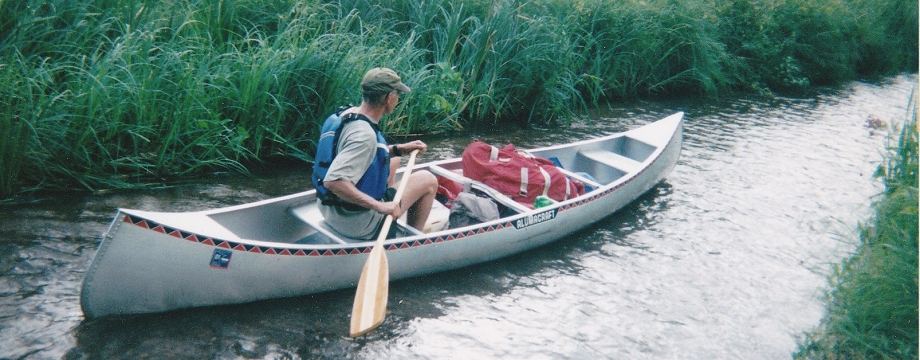

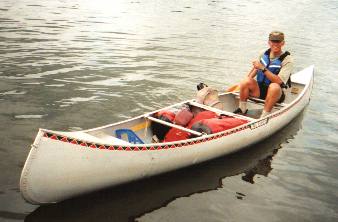


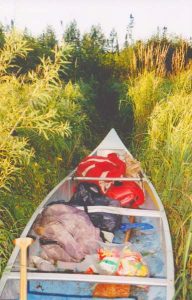
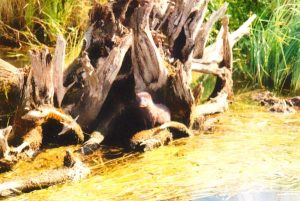
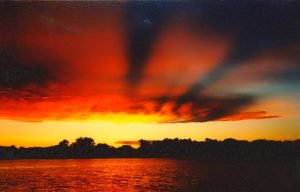
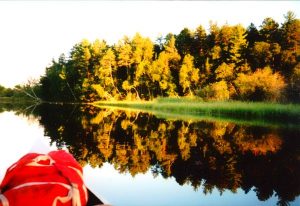
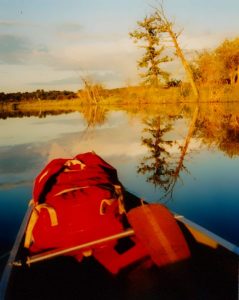
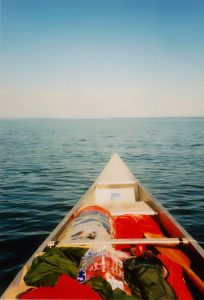
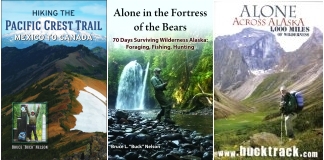
Dear Bruce, My friends Adam and I are planning on canoeing the mississippi again but starting from lake itasca and ending at coon rapids dam completing our goal to canoe all of minnesota. Although our first trip was a little sketchy as far as we didnt really know how to properly pack our canoe. I felt like we had an overload of stuff! Also if you could pass down some advice to us that would be really appreciated. We are both juniors in college and once we graduate we have plans to canoe the minnesota river to the red river… Read more »
Hi Cooper, That sounds like a good plan. I’d recommend reading through my Mississippi canoe trip pages and the questions and answers on my blog. You’ll definitely want to wear your life jackets, and be aware that it is very dangerous crossing the middle of some of those huge lakes. Many people have drowned when the wind and waves came up when they were far from shore. If you are sensible it should be a fairly safe trip. There are numerous portages on that section so pack light. Bring plenty of mosquito repellent. Take lots of photos, it’s one of… Read more »